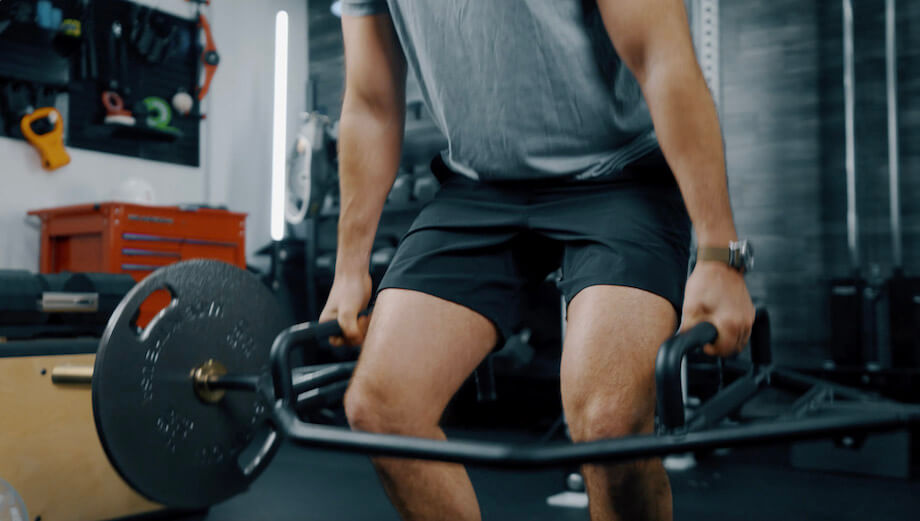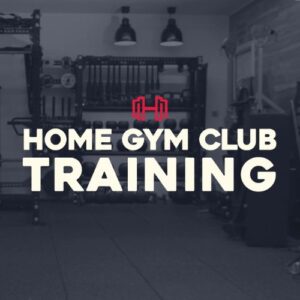We test and review fitness products based on an independent, multi-point methodology. If you use our links to purchase something, we may earn a commission. Read our disclosures.
As the lunk in one of Planet Fitness’ former ad campaigns famously said, “I pick things up and put them down.”
Exercise science tells us there’s a lot more to fitness than simply moving heavy weight for a bunch of reps. When it comes to the deadlift, however, that’s basically the long and short of it.
You pick it up. You put it down.
The deadlift is one of the best exercises you can do during your workout routine. However, not everyone is ready or able to perform deadlifts.
If you need a great deadlift alternative, we’ve got you covered. Our list includes nine great options that target the same muscle groups so you can still work toward your fitness goals without use of the traditional deadlift.
RELATED: The Deadlift: Muscles Worked, How To Do It, And Benefits

Deadlift Debriefing
The deadlift is a beautifully simple exercise and one of the most functional movements in fitness. According to Chelsea Long, MS, CSCS, TPI, exercise physiologist at NYC’s esteemed Hospital for Special Surgery1, puts it, “The hinge motion of deadlifts is a foundational component of human movement.”
The deadlift targets a multitude of muscles in your upper body, lower body, and posterior chain. According to the Public Library of Science2 in a formal analysis published in 2020, activation is observed in the biceps femoris, gluteus maximus, vastus lateralis, erector spinae muscles, semitendinosus femoris, rectus femoris, vastus medialis, external obliques, and medial gastrocnemius.
RELATED: How To Increase Strength
While your lower back, quads, hamstrings, and glutes bear the brunt of the impact, some activation is observed in the abdominals of the core and the trapezius muscles of the upper back.
When completed with correct form, the deadlift is an excellent exercise and considered one of the best, most fundamental weightlifting exercises to include in your regimen. Without proper form, on the other hand, the deadlift could lead to injury. According to a narrative review published by BMJ Open Sport & Exercise Medicine3 in 2018, deadlift-related injuries almost always affect “the lower back or lower extremities,” although one study did observe a ruptured pectoral muscle from an exceptionally heavy deadlift.
Deadlift alternatives should help you build muscle and reduce your risk of injury during future strength training. Some individuals suffering from injuries and conditions like herniated discs, spinal stenosis, and joint sprains may be unable to deadlift altogether.
Whatever your reasons for needing a good deadlift alternative, you’ll be pleased to find there are many that target the same muscle groups and provide excellent benefits for your overall fitness.
RELATED: The 16 Best Deadlift Variations
Without further ado, here are our deadlift alternatives!
1. Trap Bar Deadlift
Why it’s great: According to a study published by MDPI4 in 2017, the unique shape of the hexagonal trap bar allows lifters to move heavier loads through the same range of motion faster than the conventional deadlift that uses a straight barbell. Because the lifter’s center of gravity is more inline with the bar, it is more efficient and often more comfortable.
How to do it:
- Stand inside the trap bar and, hinging from the hips, bend over to grip each handle. You want your back straight, knees slightly bent, and your chest raised. This is your starting position.
- Drive through your heels to stand tall, allowing your hips and shoulders to rise simultaneously.
- Pause at the top, and then slowly return to the starting position.
- Repeat as needed.
RELATED: The Biggest Trap Bar Benefits
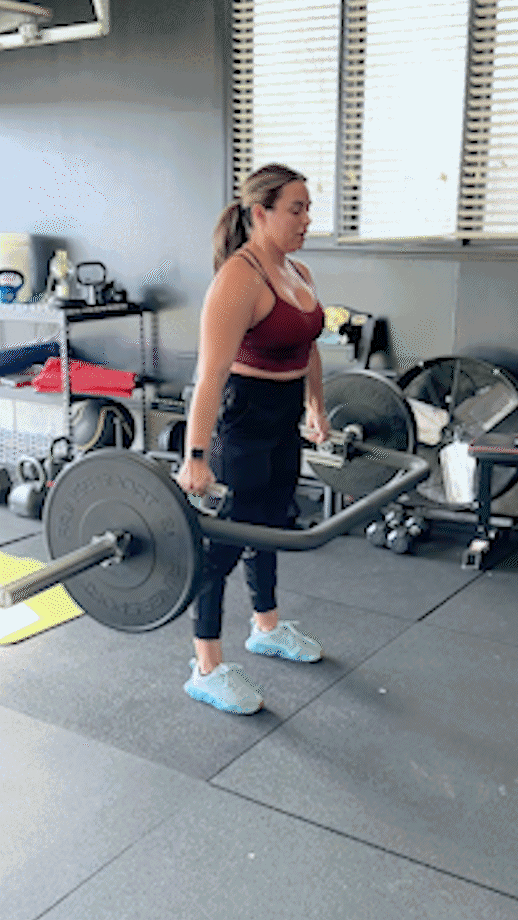
2. Glute Bridge
Why it’s great: Glute bridges are a bodyweight exercise that target the abdominals, hamstrings, lower back, and, of course, the glutes, just like the traditional barbell deadlift. Unlike the deadlift, however, it does not put excess strain on the lower back making it a great alternative.
How to do it:
- Lie on your back with your knees bent and your feet flat on the floor approximately hip-width apart. Place your arms at your sides with your palms facing the ceiling.
- Squeeze your glutes and abs as you raise your hips as high as they can go toward the ceiling without you arching your back. The goal is to raise your hips until your body forms a straight line from your knee to your hip to your shoulder.
- Squeeze the glutes as tightly and hold for two seconds.
- Slowly lower the hips down to the floor, maintaining tension in the glutes until you touch down on the floor.
- Repeat as needed.
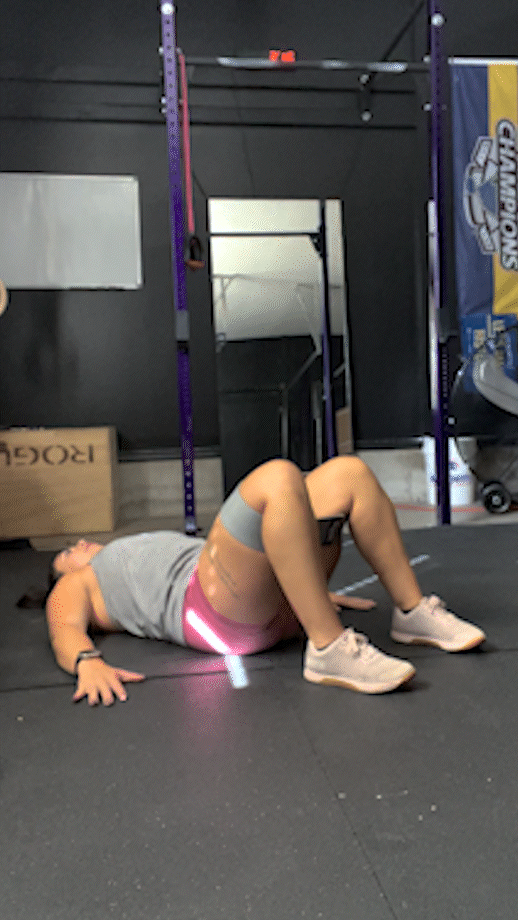
3. Hip Thrusts
Why it’s great: The dumbbell or barbell hip thrust, compared to the deadlift, isolates the glutes, quads, and hamstrings while providing respite to the lower back. The explosive hip movement from the hip thrust also provides excellent carryover to the deadlift, making it one of the best deadlift alternatives you can do.
How to do it:
- Sit perpendicular to a weight bench and place a loaded barbell in the crease of your hips. Bend your knees and plant your feet firmly into the floor, driving your back into the bench for stability.
- In your starting position, your shoulder blades should rest on the bench while your upper body and hips form a straight line.
- With a tight core and flat back, drive from the feet and thrust your hips upward. At the peak position, your upper body should be parallel with the floor. Do not arch your back.
- Squeeze the glutes, then slowly return to the starting position.
- Repeat as needed.
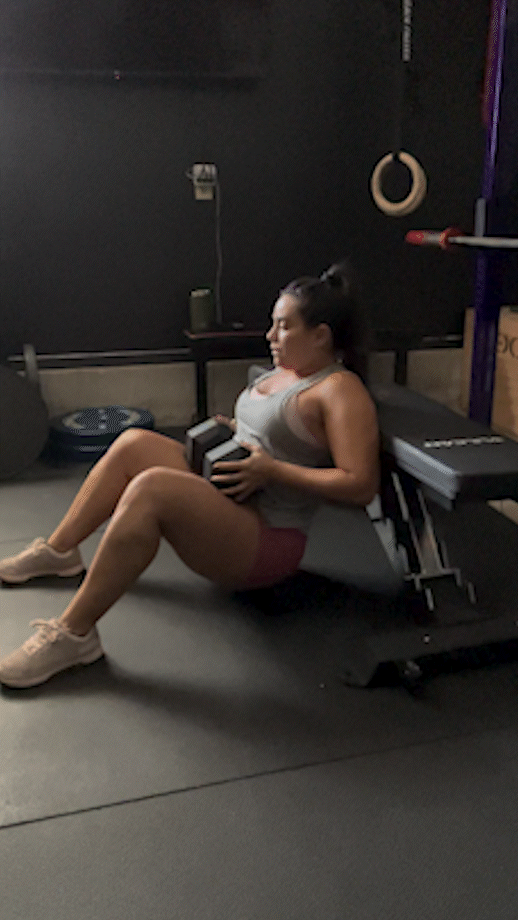
4. Russian Kettlebell Swings
Why it’s great: What’s not to love about the Russian kettlebell swing? It’s a no-impact exercise that hits the abs, shoulders, pecs, glutes, quads, hips, hamstrings, and lats in one fell swoop while, according to the International Journal of Exercise Science5, simultaneously providing cardio benefits.
How to do it:
- Hold the kettlebell with an overhand grip just below the groin. You want a flat back, neutral spine, tight core, and feet shoulder-width apart.
- Bend your knees slightly, hinge forward, then swing the kettlebell upward by thrusting your hips. You want to move the kettlebell by generating force from your hip hinge, not by pulling with your arms.
- Swing the kettlebell to chest height. Do not scrunch your neck at the top of the movement.
- Allow the kettlebell to swing back to the starting position, hinging again at the hips as you guide the kettlebell’s arc. Let the kettlebell’s momentum bring it between your legs and behind you slightly.
- Repeat as needed.
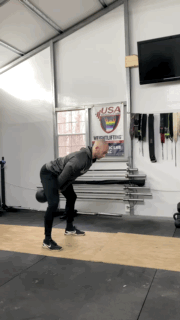
5. Good Morning With Resistance Bands
Why it’s great: By using a resistance band during your good morning, you are challenging the muscles of your posterior chain including the hamstrings, glutes, and erector spinae. This one is a great alternative exercise for beginners since it is relatively simple and requires only inexpensive fitness accessories to perform properly.
How to do it:
- From a standing position with your feet shoulder-width apart, allow a resistance band to fall to the floor and firmly step on it. Hold the other side with your hands.
- Bend so you may wrap the band around the back of your neck and stand back up. Grip the band with your hands to reduce the tension the band places on your neck.
- Bend your knees slightly and push your hips back to initiate the movement. As you hinge forward, keep a tall chest and neutral lower back.
- When you cannot move your hips back any farther and you feel a good hamstring stretch, hold it momentarily before returning to a standing position again.
- Repeat as needed.
RELATED: A Complete Guide To Using Resistance Bands Effectively
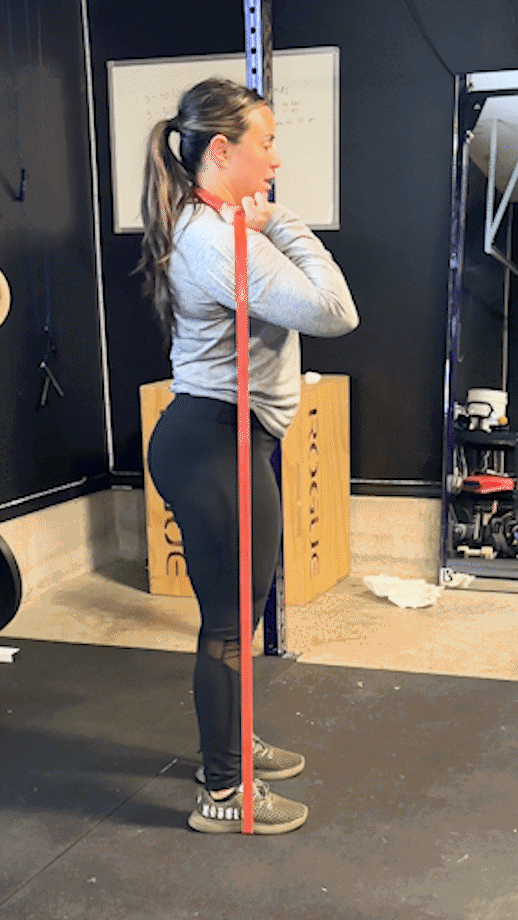
6. Farmer’s Carry
Why it’s great: The farmer’s carry hits nearly every muscle group in your body, providing activation to everything from the hamstrings to the traps to the biceps and more. It also provides cardio stimulus to improve your conditioning.
How to do it:
- You may perform the farmer’s carry with dumbbells or kettlebells. We will use dumbbells in our guide. Stand with your feet hip-width apart and a dumbbell outside of each foot.
- Pick up each dumbbell with a neutral grip and stand tall with your shoulders down, arms at your sides, core tight, and back flat.
- Start walking while maintaining a strong posture. Take small, slow steps and focus on holding your form instead of rushing through.
- Walk for the desired distance or duration.
- Slowly set down the dumbbells. Rest and repeat as needed.
RELATED: 12 Most Underrated Dumbbell Exercises To Improve Your Workout Routine Now
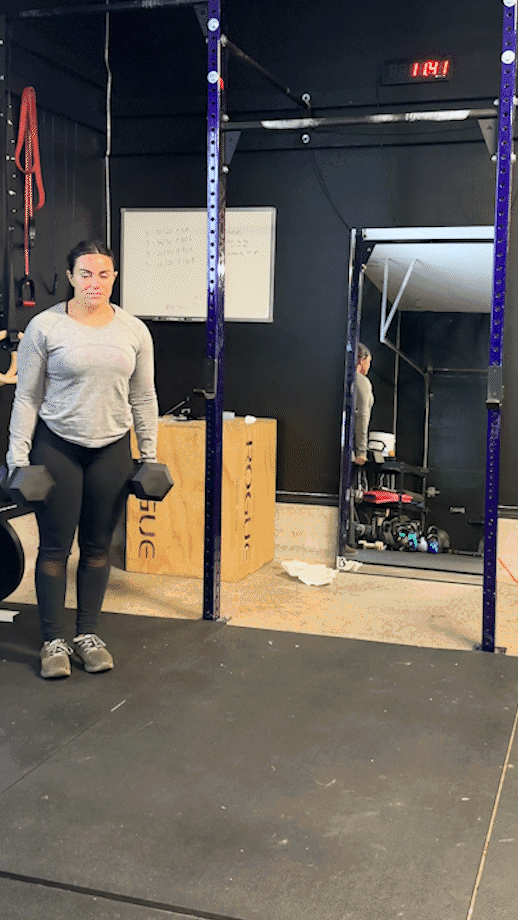
7. Cable Pull-Through
Why it’s great: The cable pull-through, like the deadlift, is a hip-hinge functional movement and an absolute glute-ham torcher. Not only are they excellent during warm-ups, they’re also good for targeting the posterior chain, increasing hip flexion, and strengthening the lower back, hamstrings, and glutes. You will need access to a cable machine to perform this exercise.
How to do it:
- Set the cable machine to the lowest setting. Facing away from the machine, reach between your legs to grab the rope handles of the cable attachment with a neutral grip.
- Take a big step forward so the weight is suspended above the stack. If the weight might clang down at the end of each rep, take another small step forward.
- Stand upright with a tall chest, feet slightly wider than hip-width apart, and your knees slightly bent. Your shoulders should stack over your feet and your chin should remain tucked into your chest.
- Keeping your arms straight, your elbows locked, and your toes on the floor, hinge at the hips until you feel a stretch in your hamstrings. At the bottom of the movement, your upper body should be at a 45-degree angle with the floor, your lower arms should be between your thighs, and hands should be behind your knees.
- Driving your heels into the floor, return to a standing position by thrusting your hips and squeezing your glutes. Pause briefly at the top before repeating.
- Repeat as needed.
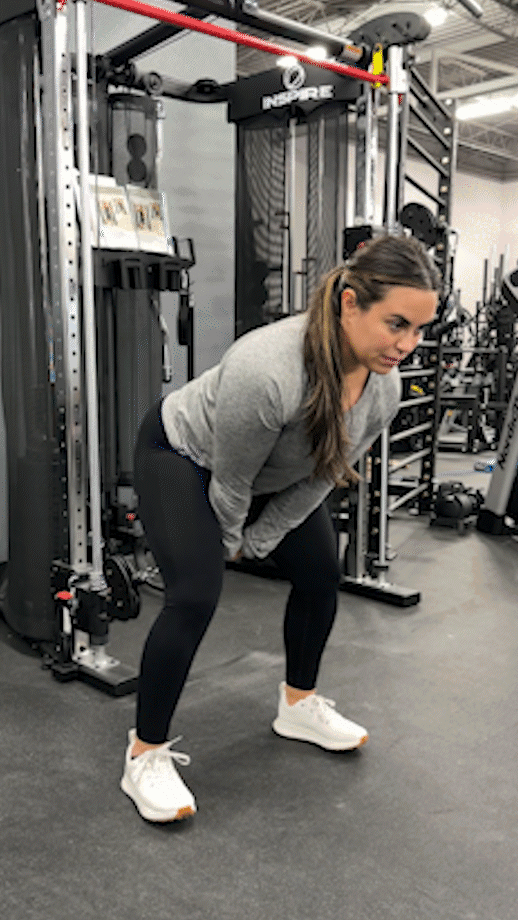
8. Lying Hamstring Curl With Resistance Band
Why it’s great: You’ll look relaxed while doing a set of lying hamstring curls, but they wreak total havoc on your hammies. It’s an excellent exercise for hitting these muscles without taxing the lower back the way deadlifts do.
How to do it:
- Anchor a resistance band to a sturdy point like a door frame. Use ankle straps to fasten the other end to your ankles. Lie prone on the floor with your feet to the anchor.
- Curl your heels toward your buttocks, keeping your back flat and butt down.
- Slowly return to the starting position.
- Repeat as needed.
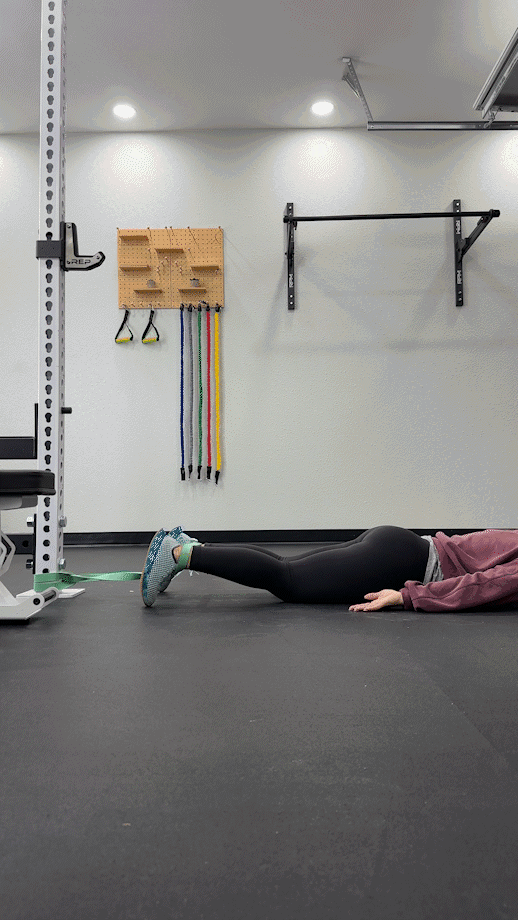
9. Prone Hip Extensions (on GHD Machine)
Why it’s great: Prone extensions on a glute-ham developer machine look like back extensions, but the difference is all in the hips. Unlike back extensions, the prone hip extension frees the hips for a full range of motion, hitting the hamstrings and glutes primarily with some ancillary benefits on the lower back and calves too.
How to do it:
- Adjust the GHD machine until the tops of your legs are resting on the support pad but your hips are free. Keep your legs straight, arms crossed in front of your torso, and neutral neck and spine.
- Hinge forward from the hips, maintaining the natural lumbar curve as you descend.
- Return to the starting position while squeezing your hamstrings and glutes.
- Repeat as needed.
Final Thoughts: Deadlift Alternatives
There’s a reason why the deadlift is so widely used in bodybuilding, powerlifting, and other sports that incorporate weightlifting to improve strength, conditioning, and athletic performance.
If your back muscles, core, or other surrounding muscle groups aren’t strong enough to support the strain deadlifts place on your lumbar spine, you may prefer using deadlift alternatives instead to build muscle and strength.
Whether you can’t deadlift or simply don’t want to, there are plenty of alternatives that target the same muscles and help you get the same results.
Try some of our recommendations during your next workout!
Q&A: Deadlift Alternatives
How do I use these deadlift alternatives in a workout?
There are many ways to create a workout using our recommended exercises above.
You could perform sets of each before moving to the next. You could superset two or more of the above, taking rest only as truly needed. You could set a Tabata timer and complete the above exercises at a mildly challenging weight or resistance but with high reps.
When in doubt, consult a qualified personal trainer for workout inspiration and advice on how to build muscle.
Are deadlifts really necessary?
In short, no. You can easily lead a healthy lifestyle, build a muscular physique, or pursue personal fitness without deadlifts.
That said, it’s part of “The Big Three” for a reason: It’s one of the most functional exercises in fitness and provides many benefits to those who perform them regularly.
Are deadlift variations good as an alternative?
If you’re not totally averse to the conventional deadlift or barbells, there are many deadlift variations that will help provide similar or, in some ways, better results. From rack pulls to Romanian deadlifts, there are more than a dozen options to choose from!
References
1. Long, Chelsea. Lower Back Pain After Deadlifts? Here’s How to Do Them Right. Hospital for Special Surgery. Published September 29, 2022. Accessed January 13, 2023.
2. Martín-Fuentes I, Olivia-Lozano JM, Muyor JM. Electromyographic activity in deadlift exercise and its variants. A systematic review. PLoS One. 2020;15(2):e0229507. Published 2020 Feb 27. doi:10.1371/journal.pone.0229507
3. Bengtsson V, Berglund L, Aasa U. Narrative review of injuries in powerlifting with special reference to their association to the squat, bench press and deadlift. BMJ Open Sport Exerc Med. 2018;4(1):e000382. Published 2018 Jul 17. doi:10.1136/bmjsem-2018-000382
4. Lake J, Duncan F, Jackson M, Naworynsky D. Effect of a Hexagonal Barbell on the Mechanical Demand of Deadlift Performance. Sports (Basel). 2017;5(4):82. Published 2017 Oct 24. doi:10.3390/sports5040082
5. Fortner HA, Salgado JM, Holmstrup AM, Holmstrup ME. Cardiovascular and Metabolic Demands of the Kettlebell Swing using Tabata Interval versus a Traditional Resistance Protocol. Int J Exerc Sci. 2014;7(3):179-185. Published 2014 Jul 1.
Further reading

The climbing pegboard has become popular ever since introduced by Dave Castro at the CrossFit Games. Although they aren't too expensive to buy, they're even cheaper to make. Here's how to make your own DIY Climbing Pegboard. Read more

Our XTERRA ERG600 Water Rower review takes an in-depth look at this budget-friendly water rowing machine. Read more

We tested and rounded up the best stair climbers for your home gym so you don’t have to wonder which machine is right for you. Read more

As the lunk in one of Planet Fitness’ former ad campaigns famously said, “I pick things up and put them down.”Exercise science tells us there’s a lot more to fitness than simply moving heavy weight for a bunch of reps. When it comes to the deadlift, however, that’s basically the long and short of it.You pick it up. You put it down.The deadlift is one of the best exercises you can do during your workout routine. » Read more about: Need a Deadlift Alternative? 9 Great Options That Work The Same Muscles » Read more

